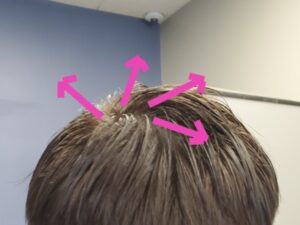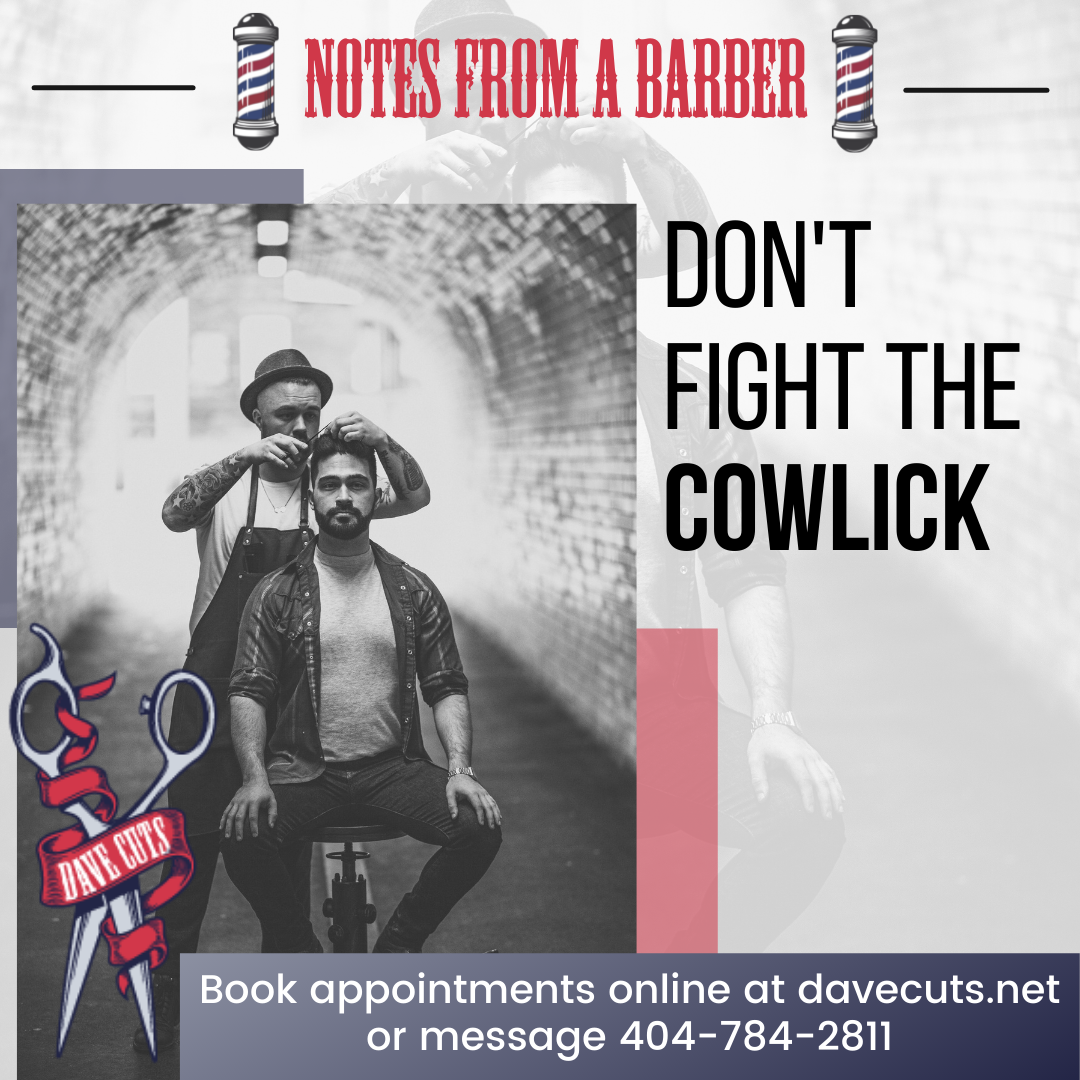Don’t Fight the Cowlick
“They tell me that I have a cowlick”
I’m told this a couple of times every day… someone sits in my chair and they say “I have a cowlick” and start pointing at places on their head (by the way, this is appreciated… it cuts reduces the mental gymnastics).
It took me a while to get used to the way my clients tell me this… quite often, it sounds like a revelation “Oh, I have this cowlick in the back” or “My barber tells me that I have a cowlick.” Many times, it sounds like the person who told them about their cowlick made it sound like they were the only one who has one, or that it’s uncommon… almost like a secret.
So what is a cowlick?
A cowlick is just an area of hair that grows in a different direction or angle from the rest of the hair. We’ve all pretty much got at least one to some extent… It’s natural, genetics, and I want to say that no two people have the exact same cowlick yet share characteristics – like fingerprints and snowflakes…
I have no data to back up that claim. It’s just what I’ve seen and I could be completely wrong on this.
 The cowlicks I’ve seen typically grow in a whirlpool pattern or radiate along a line on the head. Sometimes they grow in a flat pattern, sometimes they stick straight out. Most often, they are somewhere in between.
The cowlicks I’ve seen typically grow in a whirlpool pattern or radiate along a line on the head. Sometimes they grow in a flat pattern, sometimes they stick straight out. Most often, they are somewhere in between.
I usually see cowlicks at:
- the top of the head
- the hairline above the forehead
- the side of the head
- “double cowlick” near the back of the crown
- all over the head (as in one head, a ton of cowlicks)
Cowlicks are almost never perfectly placed to create the perfect symmetrical haircut for a perfect experience. They are pretty much always off-center and can have dramatic results. I’ve got one on the side of my head which, if I grow it out, makes my hair look like Ronald McDonald’s afro!
I know this can all sound like cowlicks are bad… I’ve heard hair cutters say that cowlicks are the enemy…
Not me… I say that a cowlick is your friend!
Working with cowlicks
I like to describe it as letting the cowlick think it’s in charge. The majority of hairstyles I cut work well with the majority of cowlicks, provided that I work with what the cowlick is giving me. I’ll give an example:
A client could never get his hair to do what he wanted it to do… go backward.
He complained about how “puffy” his hair was. I gave him the comb and asked him to show me what he meant. He combed his hair to the side and then to the back… and yes, his hair puffed up, even to the point of standing and flopping around in directions that he didn’t want it to.
I looked at his hair and saw that the hair was growing in a circle, and the area that he wanted to comb backward was naturally growing toward the right and to the front, which created the puffing and sticking up and toward the front…
Kinda like then you are petting a cat… pet it in one direction, the cat is happy. Pet in the other direction and push its hair in another direction, and the cat is uncomfortable and you might see claws come out!
Follow the cowlick and adapt the style to what it gives you
I adapted… I combed the hair into the direction which it wanted to lay down easily, and then cut it so that it would feather back to give that backward-combed feel. I explained to him what the hair was doing, and then showed him how he can get around it and make it work day-to-day without the hassles.
Cowlicks are strong by nature… they grow in a definite direction, and the hair can be straighter and more rigid. Work against them, and they can be very frustrating and get in your way…
Work with them, and they can naturally support the style which is being cut.
Making the cowlicks do what you want them to do
There are other ways to work with cowlicks… some simply need a little work and/or something put onto the hair to hold it in place.
Cut the cowlick out
This is temporary, at best. However, it does solve the problem during that time. I refer to it as cutting down the rooster tail. Done correctly, the hair is reduced (not completely taken off) and will have to regrow. This usually hides the cowlick for a couple of weeks, sometimes longer. However, once it grows to a certain point, it can stand out a bit.
Grow the cowlick out
This works best with medium or long length hair styles. As the hair grows, it gets heavier, and gravity takes over and pulls the hair downward – not straight down, but to a point where the cowlick is now adding a texture and/or shape to the hairstyle.
Wet it
Some cowlicks are easily tamed by simply wetting them and letting them dry, especially in the bangs area. Wet the hair, or a comb, or brush, and then run it through the area a few ties in the direction that you want the cowlick to go.
Dry it
Some cowlicks need a bit more help. Wet the area and then use a blow dryer to dry the hair into place. You may need to approach it from different directions. The idea is that wet hair is more manageable and the heat of blow drying it helps to hold it in one position.
Gel it in place
Holding a cowlick in place is a good use for a gel or strong paste (or clay, pomade, spray etc…). Depending on how strong the cowlick is, you will probably want to get some of the good stuff for that area – not necessarily your entire head, especially if you end up needing to use the firm or extra firm hold versions.
There are many ways to work with cowlicks, and some of them just need a little planning and tria-and-error until you find what works best for you. Usually once someone finds what works, they are quite happy with the results and transform their cowlicks from being nuisances into making the cowlicks work for them, instead.

